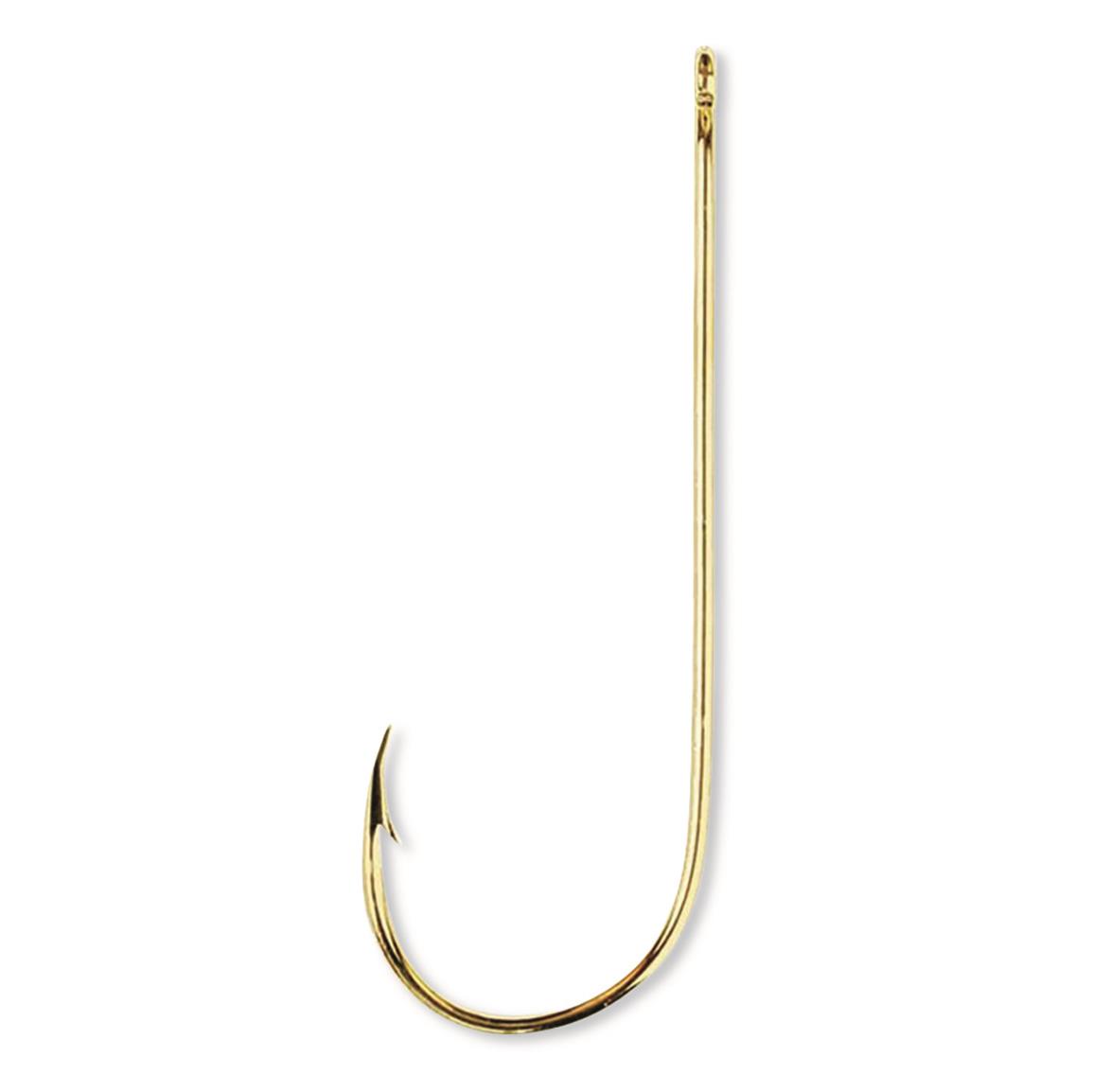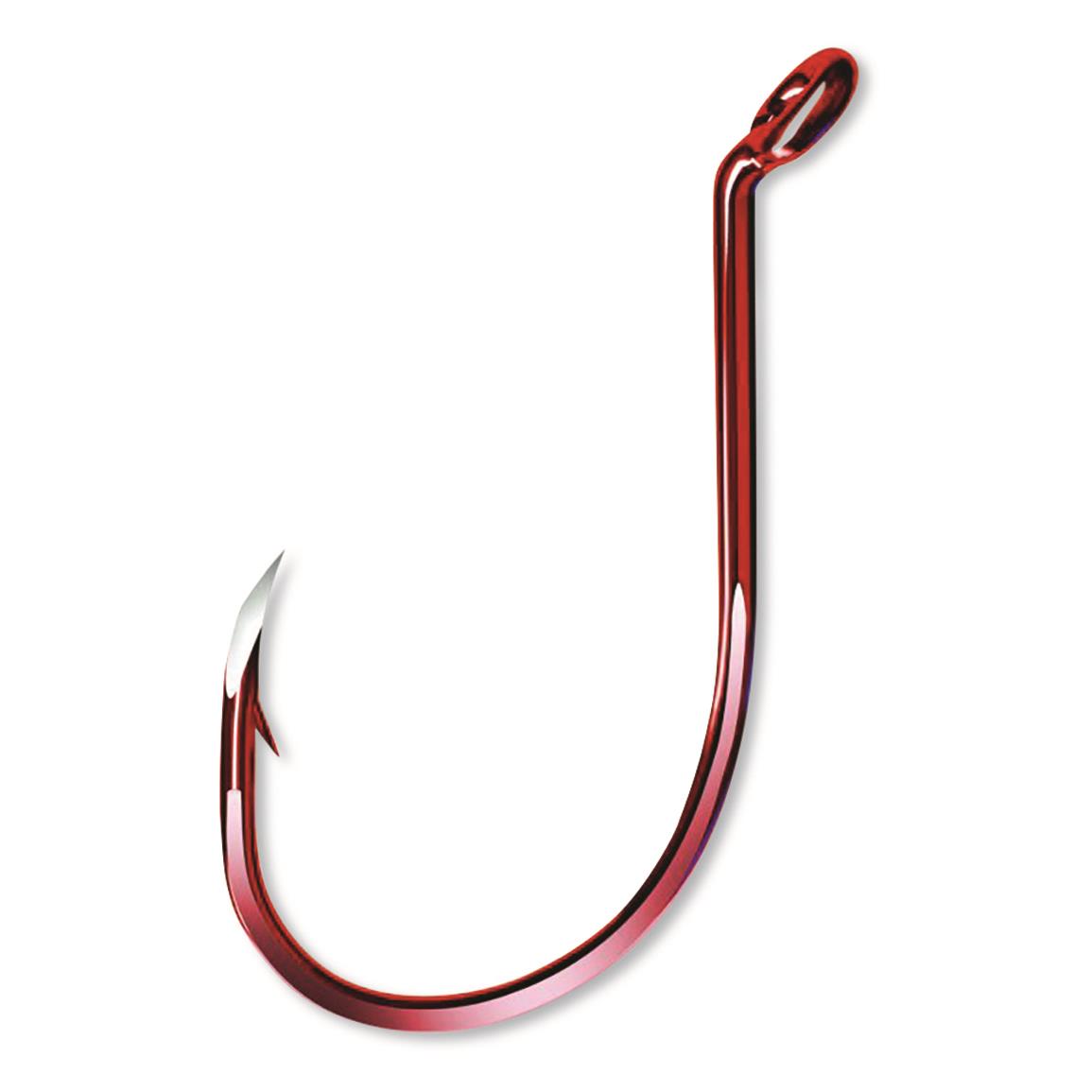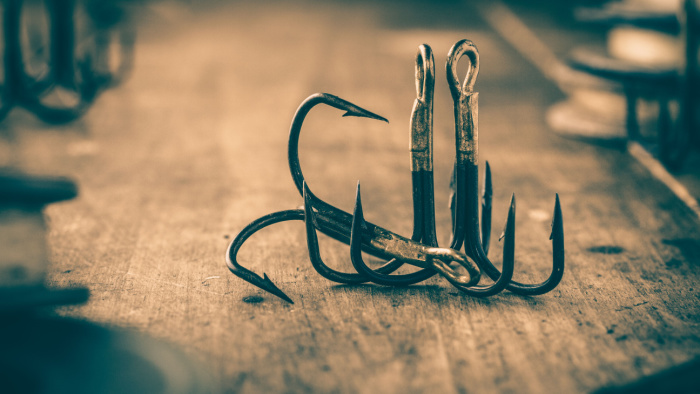Fishing with live bait is an art that requires not just skill but also the right equipment. Among the most critical components is the hook, a small but pivotal tool that can significantly impact your success on the water. With various hook styles available, choosing the appropriate one for your bait and target species can be the difference between a great catch and a lost opportunity. This guide will explore popular live-bait hook styles and provide insights on how to utilize them effectively.

Bait-Holder Hooks
Bait-holder hooks are recognizable by two or more barbs on the shank. They're standard with many anglers who fish with night crawlers to help hold them on the shank. This improves bait longevity and limits nibbling from small fry commonly occurring when fishing crawlers. Don't get me wrong, even big fish will nibble, but they don't have always to steal your bait.
Best Uses: These hooks are especially useful when using worms or soft-bodied bait, ensuring that the bait remains attractive to the target species for longer periods.
Tips: When threading the bait onto the hook, pass it through several points to take full advantage of the barbs, ensuring the bait is securely fastened yet still able to move naturally.

Aberdeen Hooks
The Aberdeen hook is noteworthy for its elongated shank and wide gap. Primarily used with worms, minnows, and larva baits, the Aberdeen allows easy removal from a fish, as the shank is always visible for easy access. This hook is popular when fishing for small-mouthed panfish. If you're introducing a child to angling, the Aberdeen is a perfect hook. The long shank will help kids get a safer feel for unhooking fish and baiting up will be easier than if using short-shank hooks.
Best Uses: Ideal for targeting panfish like crappies and bluegills, Aberdeen hooks allow for easy bait penetration and minimal damage, keeping the bait alive longer.
Tips: Use a gentle hookset to avoid bending the hook. Their flexible nature allows for easier disengagement from snags or vegetation without breaking, preserving your gear during a productive fishing session.

Octopus Hooks
Octopus-style bait hooks are popular with walleye and bass anglers and might well be the freshwater industry standard for everything from minnows and leeches to roe bags. They have a wide gap and a short shank that can accommodate a range of baits. The round shape of the Octopus also offers good hook sets, and because most are made with thin material, they minimize damage to the bait. Styles with turned-up eyes also allow for easy snelling, which many walleye anglers rely on for bottom-bouncing and harness rigs.
Best Uses: These hooks are incredibly effective across a range of fishing styles, from drifting with live bait to employing drop shot techniques. They excel when targeting fish like salmon, trout, and walleye that require a delicate yet firm hook set.
Tips: When using octopus hooks with live bait, aim to hook the bait in a manner that mimics natural movement, such as through the nose. The unique curvature of these hooks facilitates a secure catch, minimizing the need for an aggressive hook set and reducing harm to the fish.

Circle Hooks
Circle hooks, first used by commercial tuna catchers, are making inroads with freshwater live bait anglers. For those who catch and release most of their fish, the circle hook seems the way to go. Similar in appearance to the octopus style, the circle hook has a round bend in the gap, ending with a hook point that swings in towards the shank. At first glance, most people wonder how the angle of the point could ever hook a fish, but herein lies the secret. Unlike most fishing hooks, which take the force of a hook-set to stick a fish, circle hooks work on a different principle. When a fish inhales a bait and begins to swim away, the line will become taut. This allows the hook to be pulled from inside the fish's throat to the corner of the mouth. Don't set the hook. When you apply pressure with the rod and line tension increases, the hook rotates and pierces the cartilage of the fish's lip. Due to the hook style, once a fish is pegged, it rarely comes unhooked. As gut hooking is significantly reduced, though, unhooking and releasing fish are easier, and mortality rates are lower.
Best Uses: These hooks are perfect for saltwater fishing, targeting species like redfish and catfish.
Tips: When using circle hooks, resist the urge to set the hook with a sharp tug. Instead, let the fish run with the bait, and the hook will naturally find its place.

Treble Hooks
Often attached to lures, these hooks are made of three hooks welded together at an angle. Treble hooks maximize catch rates by offering multiple points of contact. Many anglers attach live bait to one of the hooks for added incentive.
Best Uses: Treble hooks are commonly used with live bait in freshwater settings, especially when targeting trout or salmon.
Tips: Keep the bait's movement natural by hooking it in a way that allows for free movement. Regularly check and adjust the bait to prevent it from appearing unnatural or distressed.
Get the Right Size Hook
The following chart gives a rough idea for hook selection:
- Roe, Red Worms: #12 to #4
- Small Minnows (2- to 4 inches) and Leeches: #4 to 1/0
- Nightcrawlers: #2 to 1/0
- Medium Minnows (3- to 5 inches), Crayfish, Leopard Frogs: #2 to 3/0
- Large Minnows (5- to 10 inches): 2/0 to 8/0
Bait-Hooking Strategies
Live bait fishing is as old as the sport itself, revered for its effectiveness in attracting a wide range of fish species. The key to success lies not just in choosing the right bait but in how you hook it.
Hooking Worms
Worms are a staple in the angler's bait box, appealing to various fish. To hook a worm, start by selecting a hook size that matches the worm's size. Throw them onto the hook multiple times for larger worms, leaving both ends dangling to maximize movement. A single hook through the center or one end is often enough for smaller worms. The goal is to keep the worm alive and wriggling for as long as possible.
Small portions of worm are an excellent choice for plump gills. Since these fish have small mouths, a 1-inch to 2-inch piece of worm works best. If you're dealing continuously with nibblers, your presentation is too large. For bigger prey, such as bass and walleye, hook the worm once through the collar, or directly through the middle (wacky-worm style), or through the fat end, depending on how you're fishing it. Up-front hooking is best for fishing a worm on a moving presentation, such as a trolled harness or a drifting rig. Larger fish will inhale a whole night crawler, so don't worry that excess worm is away from the hook, as this adds to a realistic presentation.
Hooking Leeches
Leeches, with their undulating motion, are irresistible to many fish species. To hook a leech, pass the hook through the sucker end, avoiding the body's middle to preserve its natural movement. A thin-wire hook works best, allowing the leech to swim freely and attractively.
Hooking Minnows
Minnows can be hooked in several ways, depending on how you want them to behave in the water. For a natural swimming action, hook the minnow lightly through the lips or the back just below the dorsal fin. To keep the minnow in place, hook it through the tail. Use small, sharp hooks to minimize injury and stress, ensuring the minnow remains active.
Hooking Crayfish
Crayfish are excellent bait for bottom-feeding fish. Hook a crayfish through the tail, either from underneath and up or through the side, to keep it secure while allowing for natural movement. When targeting species that prefer active prey, hooking through the thorax allows the crayfish to move more freely.
Hooking Frogs
Frogs are top choices for large freshwater fish like bass. To hook a frog, insert the hook through the lip or hind legs, depending on your fishing technique. Hooking through the hind legs allows for an enticing leg-kicking action, especially effective in topwater fishing. Choose a hook that is large enough to secure the frog but small enough to allow for its natural movement.
Each hook type offers distinct advantages, whether you're looking to ensure bait longevity, facilitate ethical catch-and-release, or enhance bait presentation. By experimenting with these different hooks and applying the provided tips, you can tailor your approach to suit your target species and fishing conditions, leading to more enjoyable and productive fishing experiences. Also, we highly recommend you consult a reputable fishing report for the area you are fishing to get a good idea on what type of bait the fish are biting on.
At Sportsman's Guide, we love to fish. Trust us for all your Fishing Gear, including Fishing Reels, Abu Garcia Fishing Reels, Lures and more.



